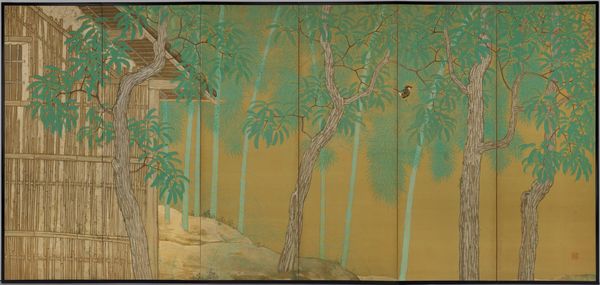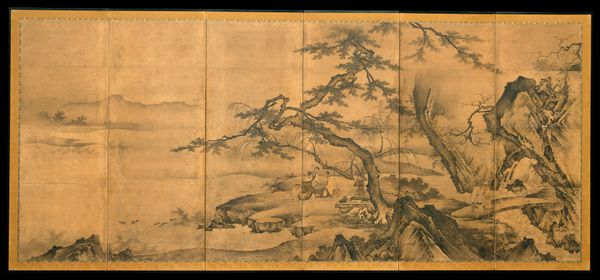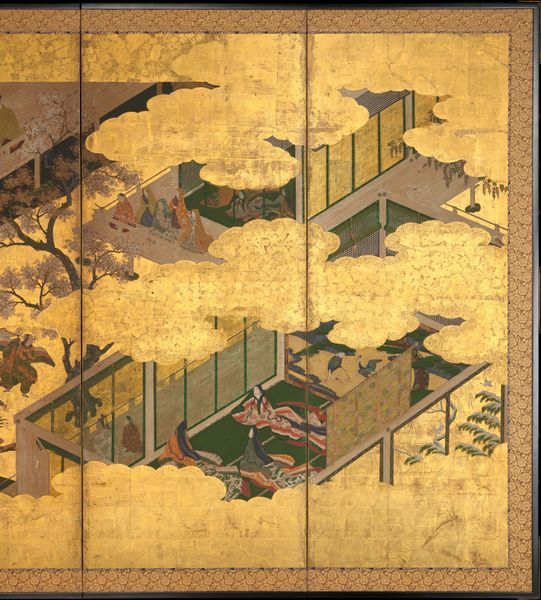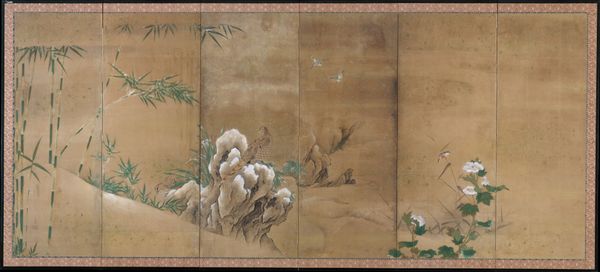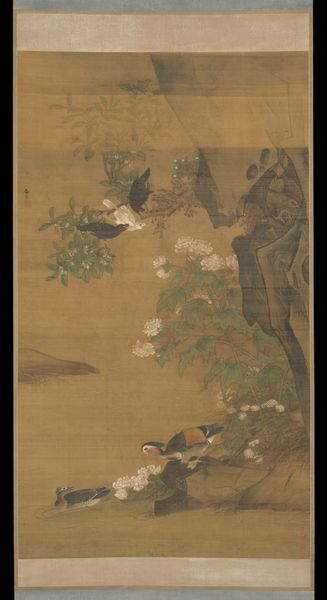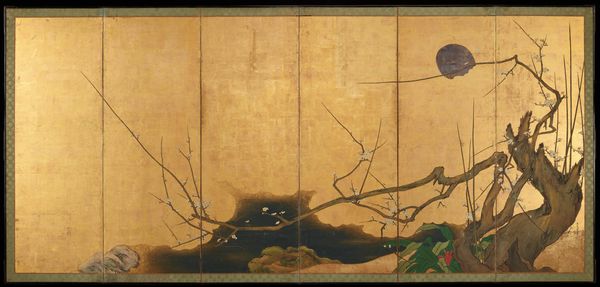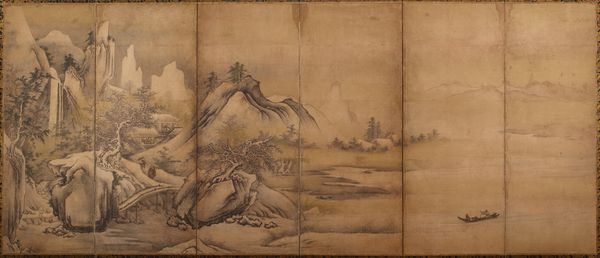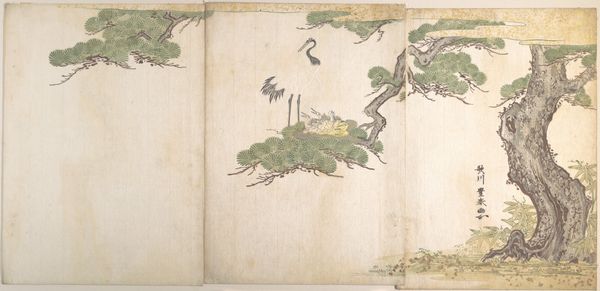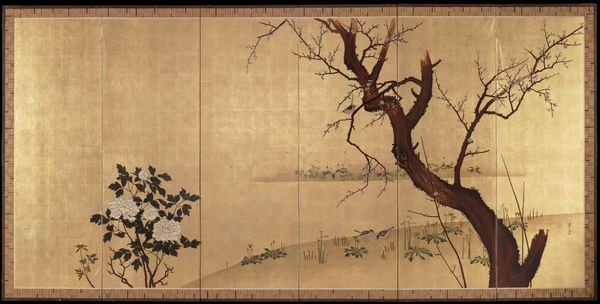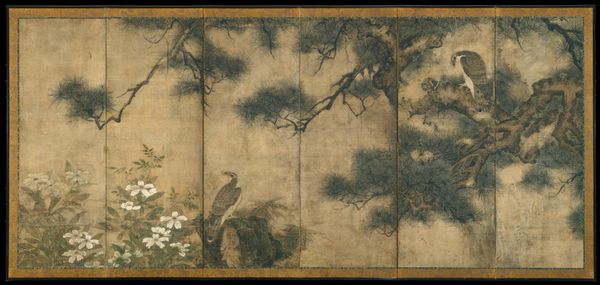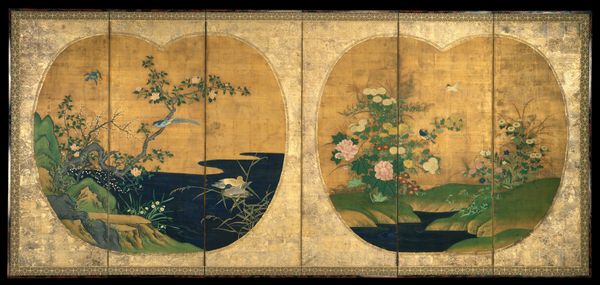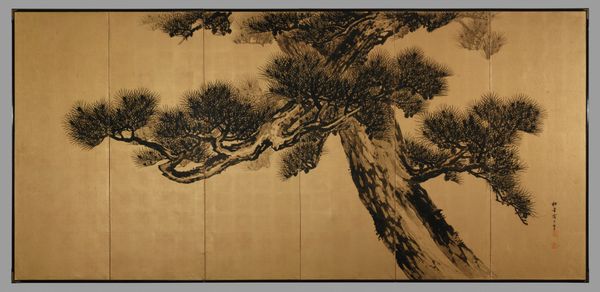
tempera, painting, wood
#
tree
#
natural stone pattern
#
tempera
#
painting
#
asian-art
#
landscape
#
classical-realism
#
figuration
#
geometric
#
plant
#
orientalism
#
line
#
wood
#
yamato-e
Dimensions: 460.5 x 169.5 cm
Copyright: Public domain
Curator: This is "Cypress Trees", a late 16th-century tempera on wood work attributed to Kanō Eitoku. I find its golden atmosphere strangely inviting, despite the somewhat imposing trees. Editor: Imposing is right! It's grand and sort of brooding, wouldn’t you say? Those cypresses dominate everything. Curator: Exactly! Notice how Eitoku plays with scale? These massive trees are set against a landscape that feels almost miniature, giving the work a powerful, monumental feel. He's employing a style linked to Yamato-e, known for its expressive, often narrative, use of form. Editor: I do like the flat, almost geometric treatment of the landscape. It feels less about pure representation and more about evoking a feeling—that melancholy grandeur, as I called it. I imagine it has something to do with historical Japanese visual language. Curator: You're picking up on the conscious departure from straightforward realism. Traditional painting in this period frequently incorporated stylized natural forms with symbolic weight. Cypress trees, especially ancient ones, were considered sacred in some instances, often interpreted as emblems of longevity or steadfastness. Editor: It's all incredibly striking to observe, even without knowing the trees are symbols of something beyond their obvious shape and form. You could lose yourself in it – perhaps get delightfully crushed by the weight of its golden, foresty hug. Curator: Perhaps that tension between visual impact and symbolic density accounts for why "Cypress Trees" continues to intrigue viewers after hundreds of years. The piece makes us ponder what a Japanese idealization of landscape could entail. Editor: Yes, Eitoku really brings us into dialogue with art and history. A very satisfying and meaningful look into artistic form.
Comments
No comments
Be the first to comment and join the conversation on the ultimate creative platform.
